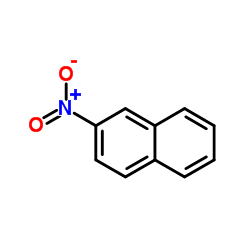Modulation of chemical-induced lung and liver toxicity by all-trans-retinol in the male Sprague-Dawley rat.
J M Sauer, I G Sipes
文献索引:Toxicology 105(2-3) , 237-49, (1995)
全文:HTML全文
摘要
We have previously shown that retinol pretreatment limits the amount of pulmonary injury caused by 1-nitronaphthalene in male Sprague-Dawley rats. The main objective of this study was to determine if retinol pretreatment can protect the lung from the toxicity of other systemic pneumotoxicants. Furthermore because retinol has been shown to alter the hepatotoxicity of several chemicals, a secondary objective was to evaluate its effects on the liver injury caused by these toxicants. Rats were pretreated with all-trans-retinol (75 mg/kg/day, p.o.) for 1 week, and given 2-nitronaphthalene (200 mg/kg, i.p.) or paraquat (25 mg/kg, i.p.). At 24 h after 2-nitronaphthalene treatment, pulmonary morphological changes associated with the bronchiolar epithelium, as well as a moderate pneumonitis were observed. Pretreatment of rats with retinol inhibited the majority of 2-nitronaphthalene-induced pulmonary damage including the infiltration of inflammatory cells and associated edema. However, these animals possessed limited lesions associated with their non-ciliated bronchiolar epithelial (Clara) cells. Interestingly, pretreatment with retinol also caused a significant potentiation of 2-nitronaphthalene-induced liver damage. The potentiated hepatotoxicity consisted of centrilobular hepatocyte necrosis with infiltration of inflammatory cells. Gadolinium chloride (GdCl3), an inhibitor of Kupffer cell function, significantly decreased the potentiated hepatocellular injury. In paraquat-treated rats focal areas of damage to the alveolar parenchyma, consisting of inflammatory cell infiltration and alveolar sac remodeling, were observed at 48 h. Pretreatment with retinol caused significant protection from the pulmonary damaged caused by paraquat. Specifically, there was a lack of alveolar parenchymal cell damage and inflammatory cell infiltration in these animals. From these experiments, we conclude that retinol pretreatment decreases the severity of 2-nitronaphthalene and paraquat-induced pulmonary toxicity, apparently by inhibiting the inflammatory responses associated with the progression of toxic injury. In the liver, retinol potentiated 2-nitronaphthalene-induced hepatotoxicity by a mechanism which directly involves Kupffer cells.
相关化合物
| 结构式 | 名称/CAS号 | 分子式 | 全部文献 |
|---|---|---|---|
 |
2-硝基萘
CAS:581-89-5 |
C10H7NO2 |
|
Comparative cytotoxicity of naphthalene and its monomethyl- ...
1986-02-01 [J. Appl. Toxicol. 6(1) , 13-20, (1986)] |
|
Induction of LacZ mutations in Muta Mouse can distinguish ca...
2006-09-19 [Mutat. Res. 608(1) , 88-96, (2006)] |
|
1-nitronaphthalene.
1989-01-01 [IARC Monogr. Eval. Carcinog. Risks Hum. 46 , 303-12, (1989)] |
|
Comparison of in vivo binding of aromatic nitro and amino co...
1989-10-15 [Biochem. Pharmacol. 38(20) , 3511-9, (1989)] |
|
Comparison of the sensitivity of Salmonella typhimurium stra...
1993-01-01 [Mutat. Res. 301(1) , 7-12, (1993)] |